Тогда мы идем к вам
Then we are coming to you
Live art
2019
In Russia in the 1990’s there was an advertisement on Tv of Tide detergent. The storyline went so that there were two kids sitting on the staircase of an apartment block building. Apparently, they were told to leave the house and their mother is “boiling”- washing clothes in a large pan of boiling water, heated on a kitchen stove. “Boiling” is a well-known practice that bleaches the clothes and returns them their whiteness. I still use this method of doing laundry in my home in Finland regularly. So it goes on - a man appears on the staircase and he is holding a box of Tide. He is there to demonstrate to the mother that it is possible to achieve this pure whiteness by simply washin the garments in the right detergent. The tagline goes as follows: “Are you still boiling? Then we are coming to you”.
Privacy of personal dwelling is a fundamental human right. It is unsettling to imagine that someone can just open the door and come into your home. However, the practice of carrying out searches in people’s homes as a way of threatening and intimidating citizens has been a common practice of police forces. This is often a first step before somebody is arrested or charged. People’s homes are being searched, people are being searched, their belongings and their bodies touched by force. The process of cleaning references the act of destroyin evidence, getting rid of information, something that can be used against you. Time is a currency, luxury, and a curse.
This performance is part of a body of work I am currently developing which has a working title of Slow Room. Slow Room is a series of projects and multimedia sculptures that explore textiles, spaces of confinement, and time. They are focused discipline and judgement and guilt.
Looking seeing and turning away. Loneliness. Boundaries.
.
 This work was presented on November 8th, 2019 at Museum of Impossible Forms in Kontula, Helsinki as part of Performance LAB, which a platform for experimental performances and hosts artists, poets, dancers et al to make live art pieces. Curated by Vishnu Vardhani Rajan.
This work was presented on November 8th, 2019 at Museum of Impossible Forms in Kontula, Helsinki as part of Performance LAB, which a platform for experimental performances and hosts artists, poets, dancers et al to make live art pieces. Curated by Vishnu Vardhani Rajan.Peltojoki
(No barbed wire necessary)PoW Camp in Lapland, Finland, 1941-1944.
Machine Embroidery on Linen
2015

For Keeps
(Things I make when I think about what things to make)2012-2013
The work for the project, exploring the blurred border between personal and professional in the identity of an artist started at the Faber studios residency in 2012.
Contemporary creative process allows for more thinking and planning than actual producing. Modern technology allowed and the financial recession forced us to abandon the rent on a studio and move our creativity closer to home. It presented us with a schizophrenic lifestyle where professional duties are interrupted by domestic chores. The boundaries of house/work are blurred, as the creative process is often exercised through washing the dishes or sewing a button, proving that while the hands are occupied, the mind can focus. Ideas develop while we fold the laundry, dry the hair, or repot a plant. We have to then drop what we’re doing and run to the computer to type notes. Jobs take much longer to complete, as we are also distracted by arrival of a package from ebay, social media on the laptop, household bills to pay and the dog to walk. Relationships have developed beyond gender roles, as men now work on their careers while changing nappies and women fix the shower while designing a website. IT, accountants, teachers, journalists, regardless of sex and age, - these professionals moved home to work. We play house while we work and we eat on our lap as the dining table has been turned into a desk. Does this affect our work?
Does our work become more intimate since it is made in our bedroom?
The interactive piece consists of a series of photographs, presented in form of a customized children’s game. The game called POG invented in 1920s in Hawaii takes its name from a brand of juice made from passionfruit, orange and guava. The rules require compiling everyone’s disks into a stack face down, and throw a slammer at it. If the pogs turned over at your go – you get to keep them. If not – restack and hand the slammer over to the next person.The use of the POG bottle caps to play the game pre-dated the game's commercialization as at first kids simply drew designs on the white caps and made slammers by gluing three disks together. During the 1990’s, when the game experienced a revival, factory-produced caps carried images of cartoon characters, dragons and popular culture imagery, including photos of actors and figures like Bill Clinton and Tony Blair. They were cheap and sometimes came free with packets of crisps and boxes of cereal. After some time, adults realised the potential of constantly-hand-changing pogs as mini-billboards and placed religious messages, political slogans or banal advertisement on them. Because many children would keep the pogs they won in games from other players, schools considered pogs a form of gambling. Pogs proved to be major distractions from classes and the source of various playground arguments. These reasons eventually led to the banning of pogs from various schools across North America and Europe.
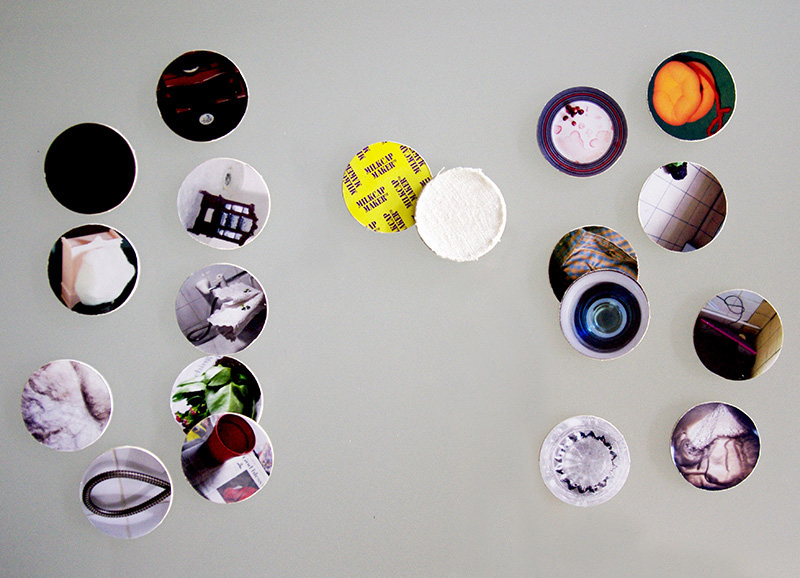
Weight of the World
Felt, needle, handheld weighting scale.2012

Neither Here Nor There
1 min looped video2010
Commissioned by the Table of Contents project.
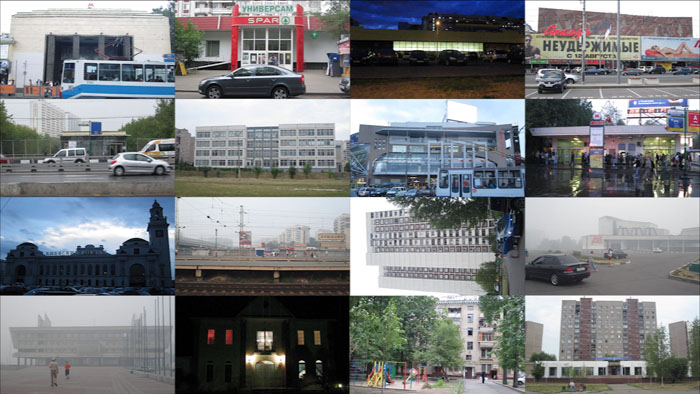
A sketch for the future
2010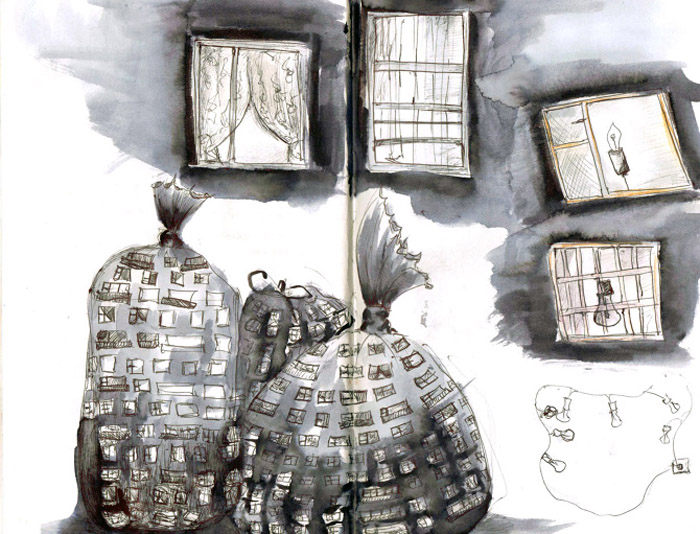
An Ongoing Dialogue
2010The project was created in collaboration with Elena Bezborodova and shown at Mamuska Performance Night, Le Cat Salons, the Loft, Dublin, Ireland in November 2010.

In the work, the relationship between manmade environment and human are explored. The interest lies in psychogeography which studies the influence of the environment on an individual and the changes "new" individual makes to their surrounding. On a larger scale it is an ongoing dialogue between architecture and a human being.
Later, a a photographic series was made exploring the subject, projecting images of the familiar environment on to the artists' bodies.
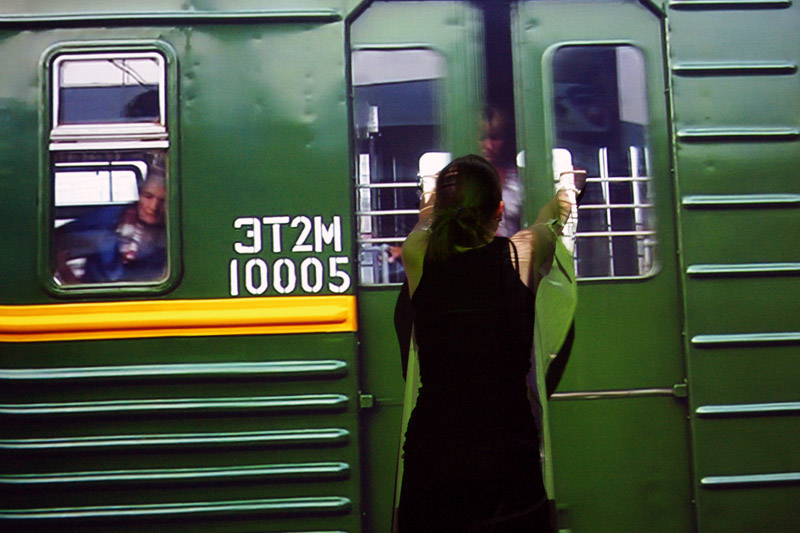
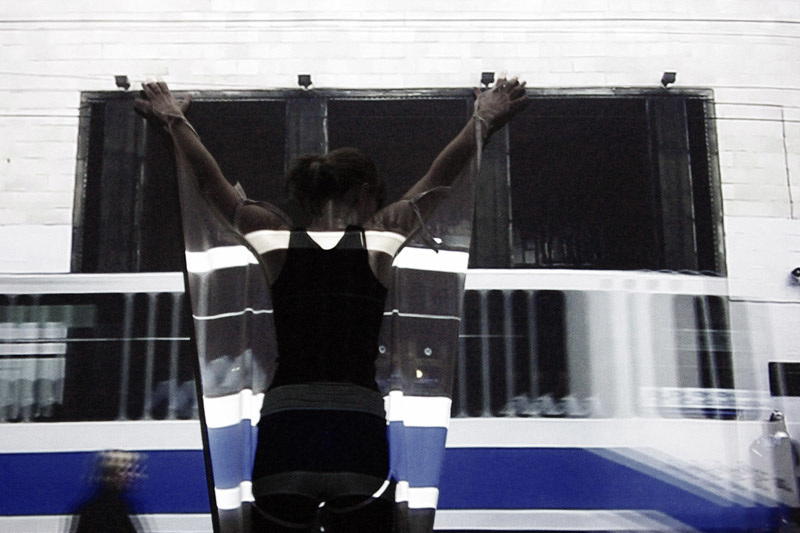

Molotov 2010
Under Siege Solo performance, duration 2 minutes
2011
Performance was developed during the workshop with artist Oscar McLennan and enacted at Dry performance night, the Loft, Limerick. The work interpreted the notions of fear, worry and self-distraction on a personal as well as global level. It was intended to communicate the paradox of security and fragility of home and the terrors of today’s world.
This un-lengthy performance presented the artist saying a chant in Russian language and attempting to squeeze a chicken egg between the hands. An egg, if pressed from either end, is impossible to crack. Yet at the end of the prayer it gave way, splashing all over the artist and the audience in the front row.
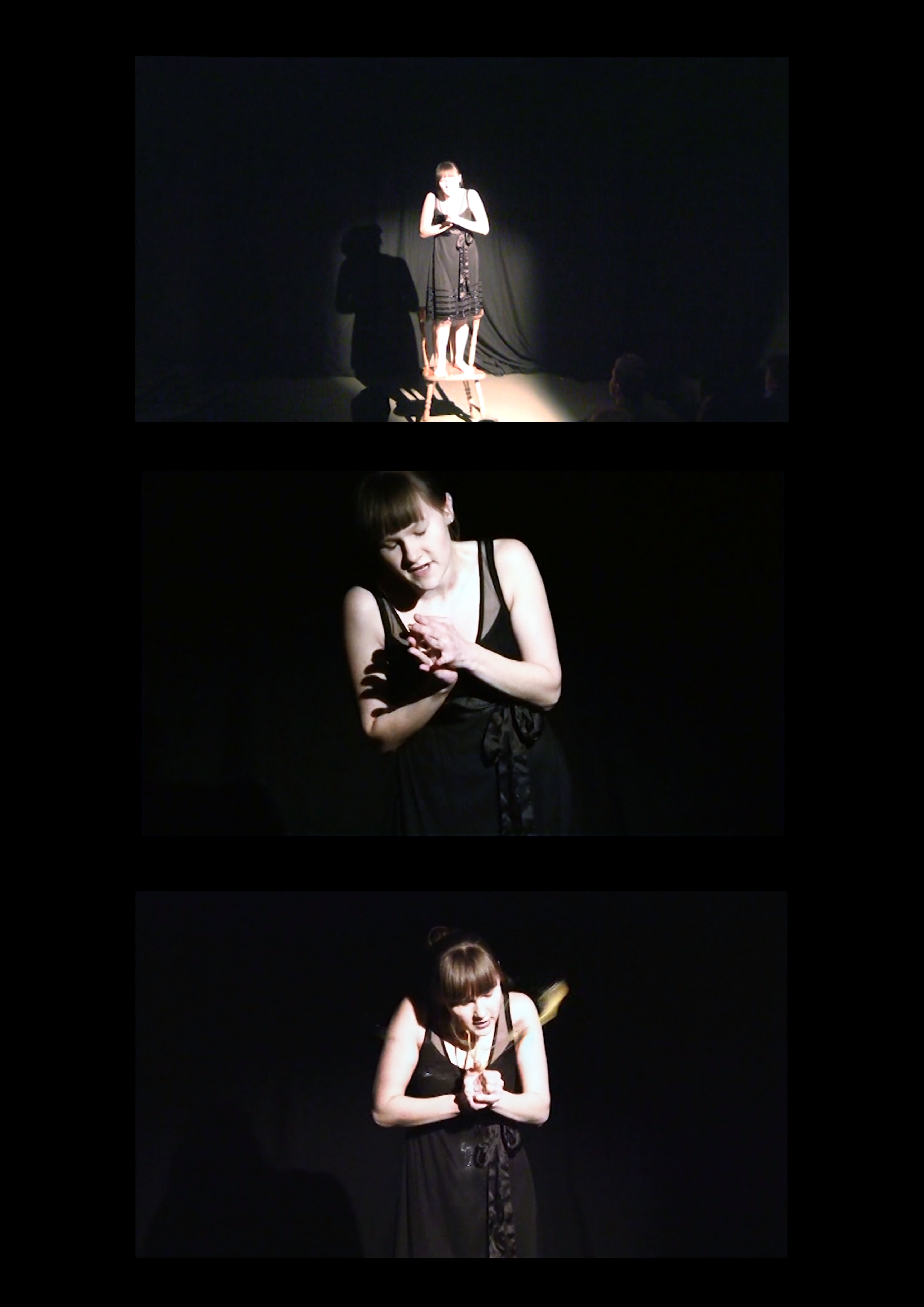
Dry Performance night, The Loft, Limerick City, February 2011.